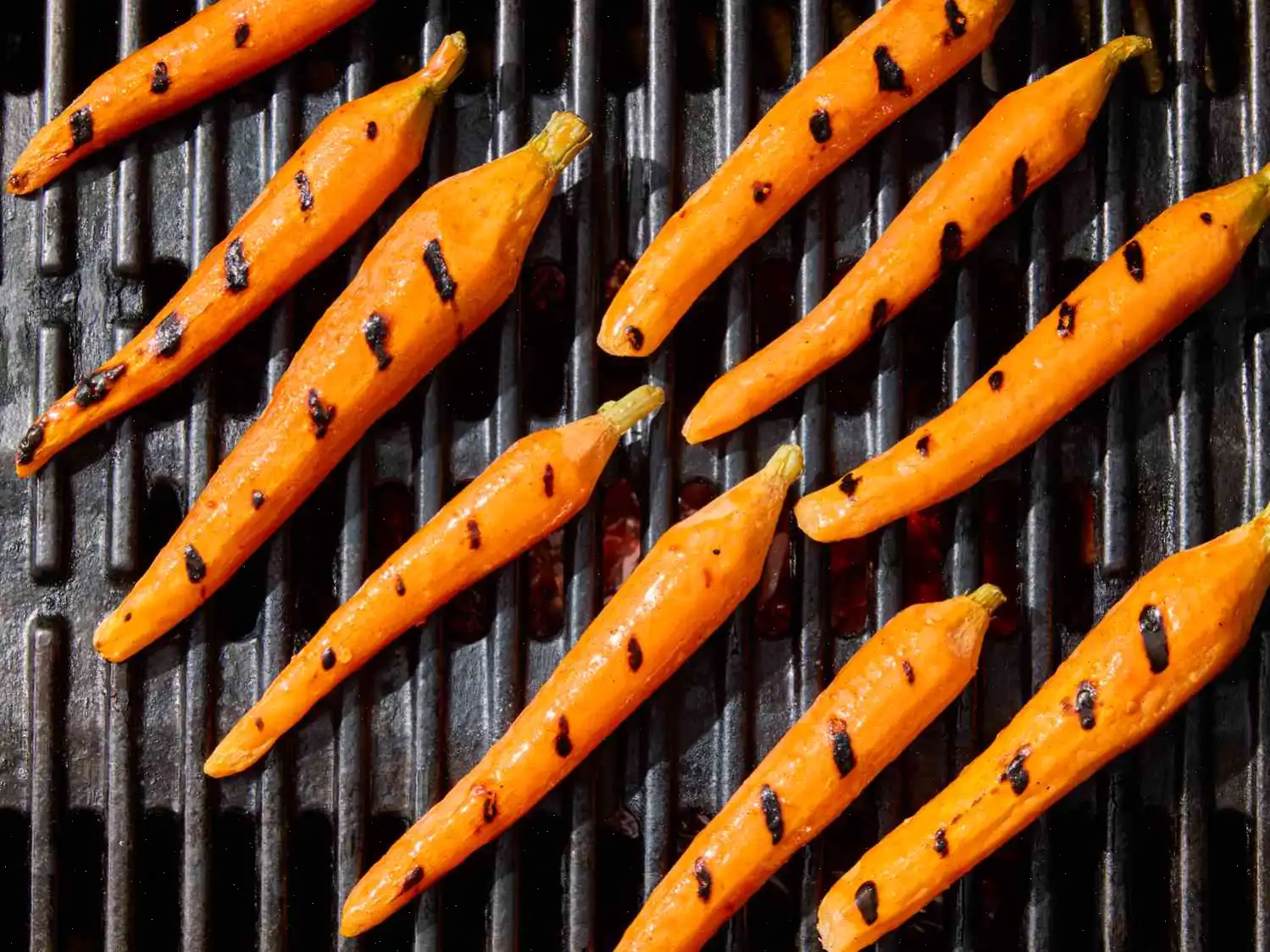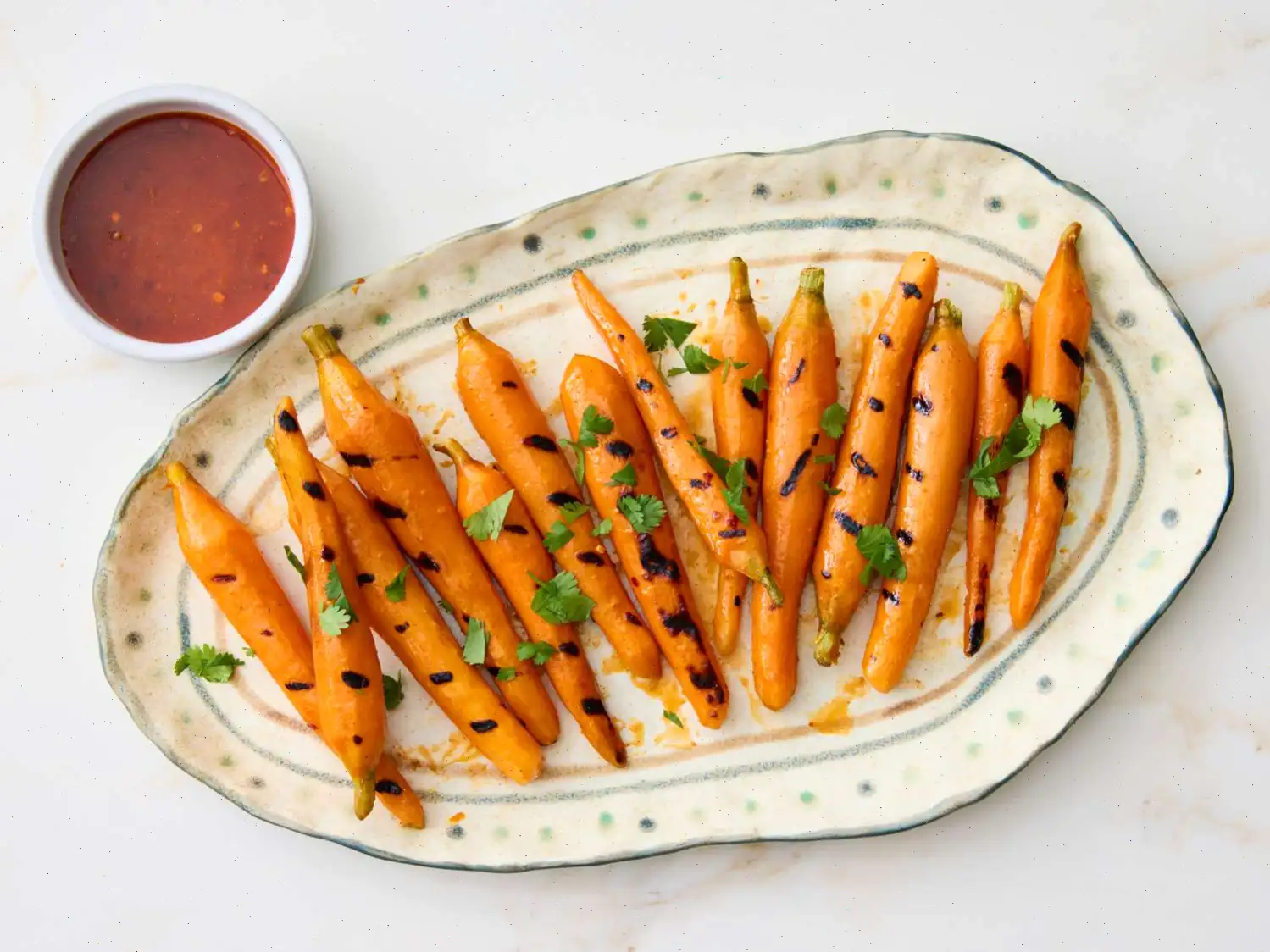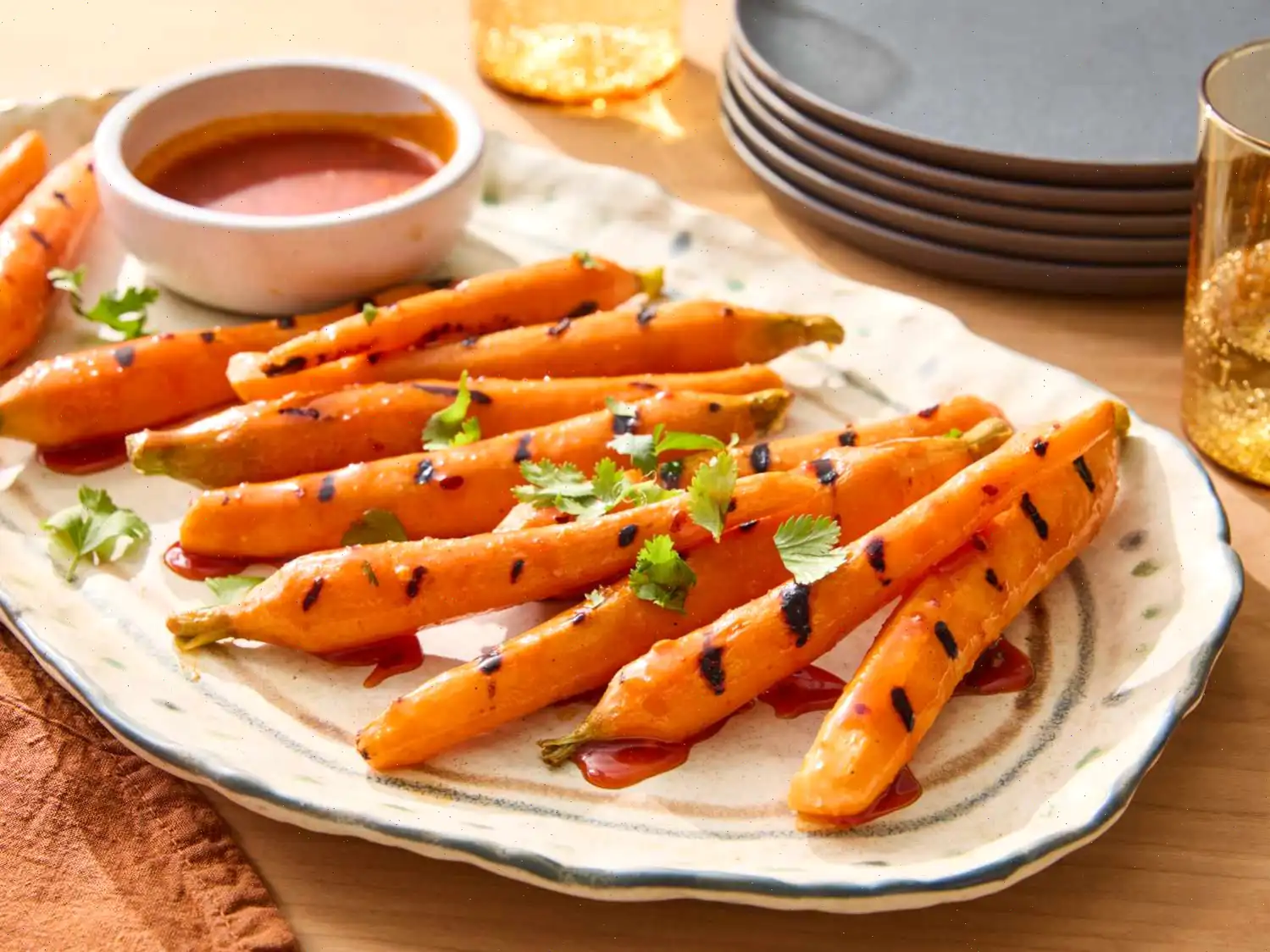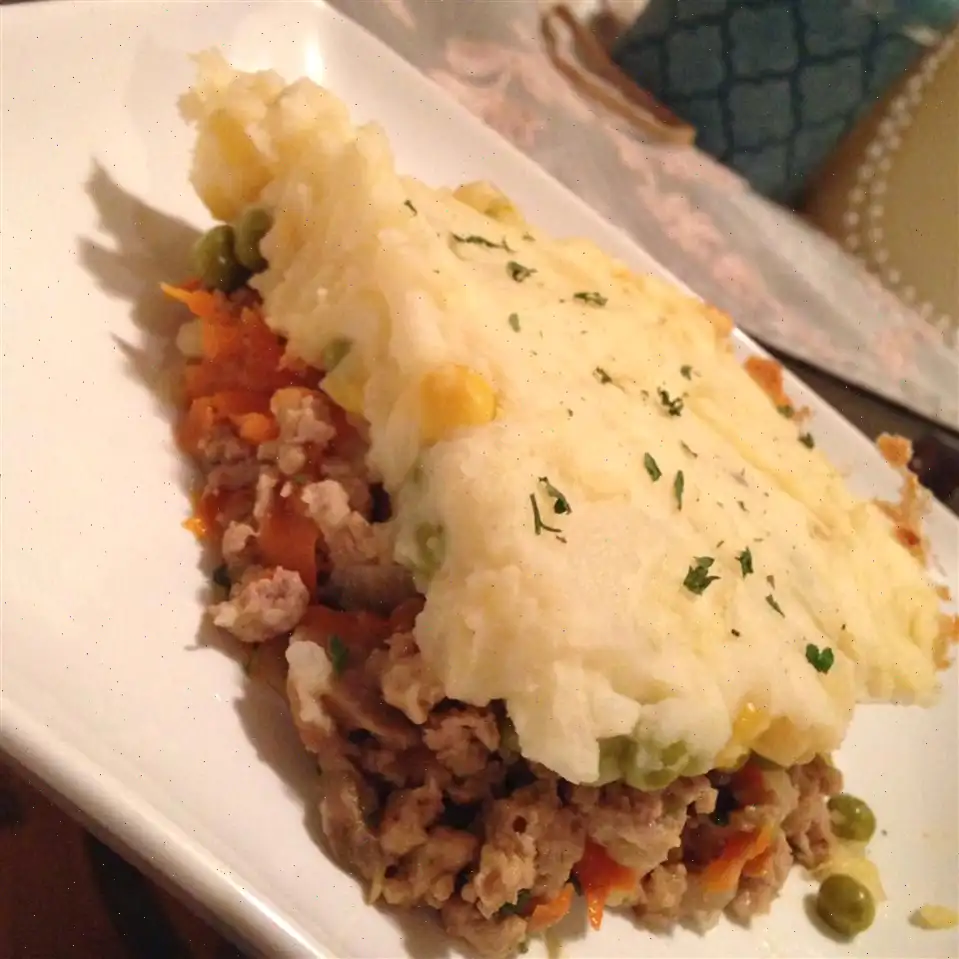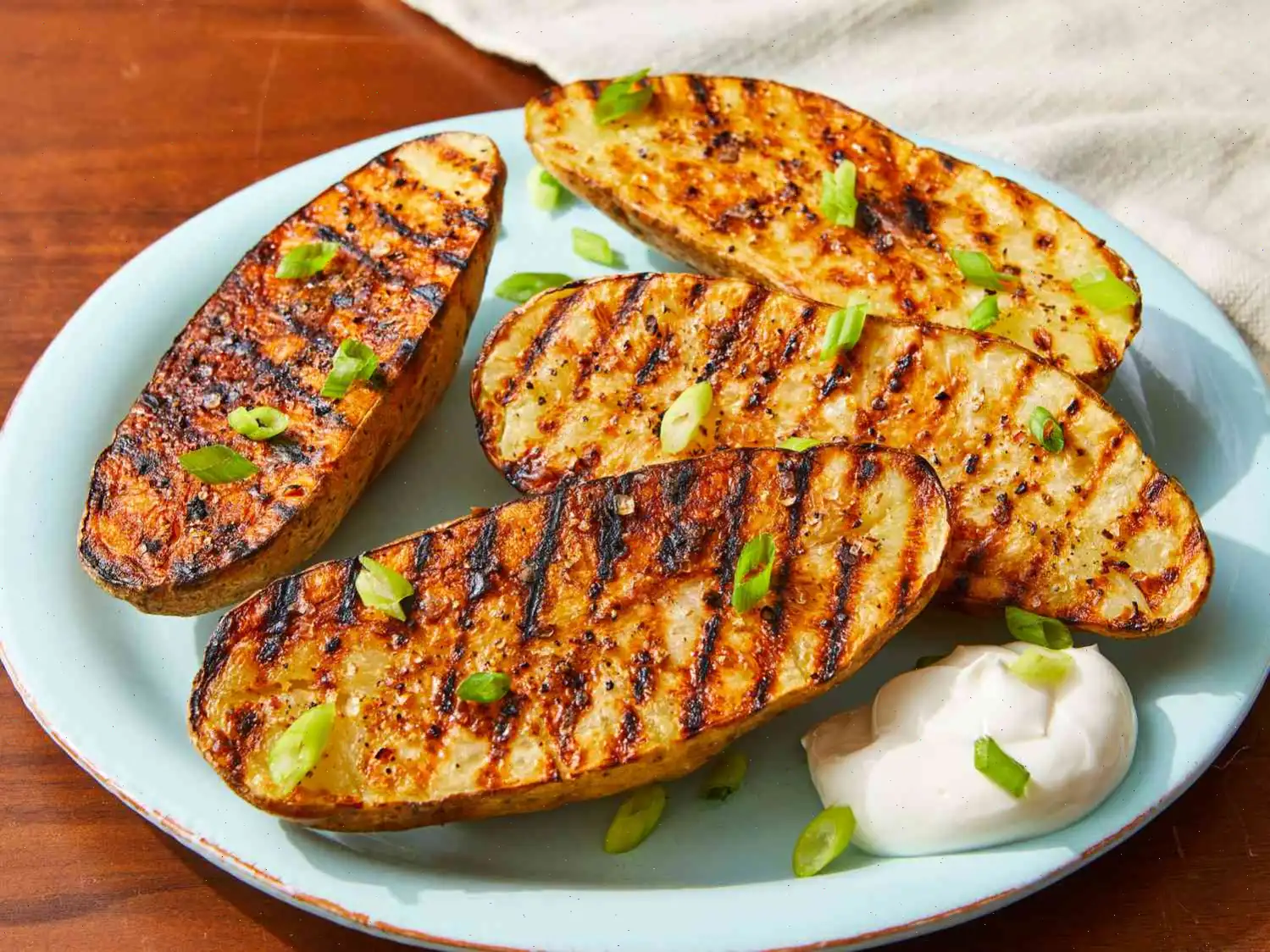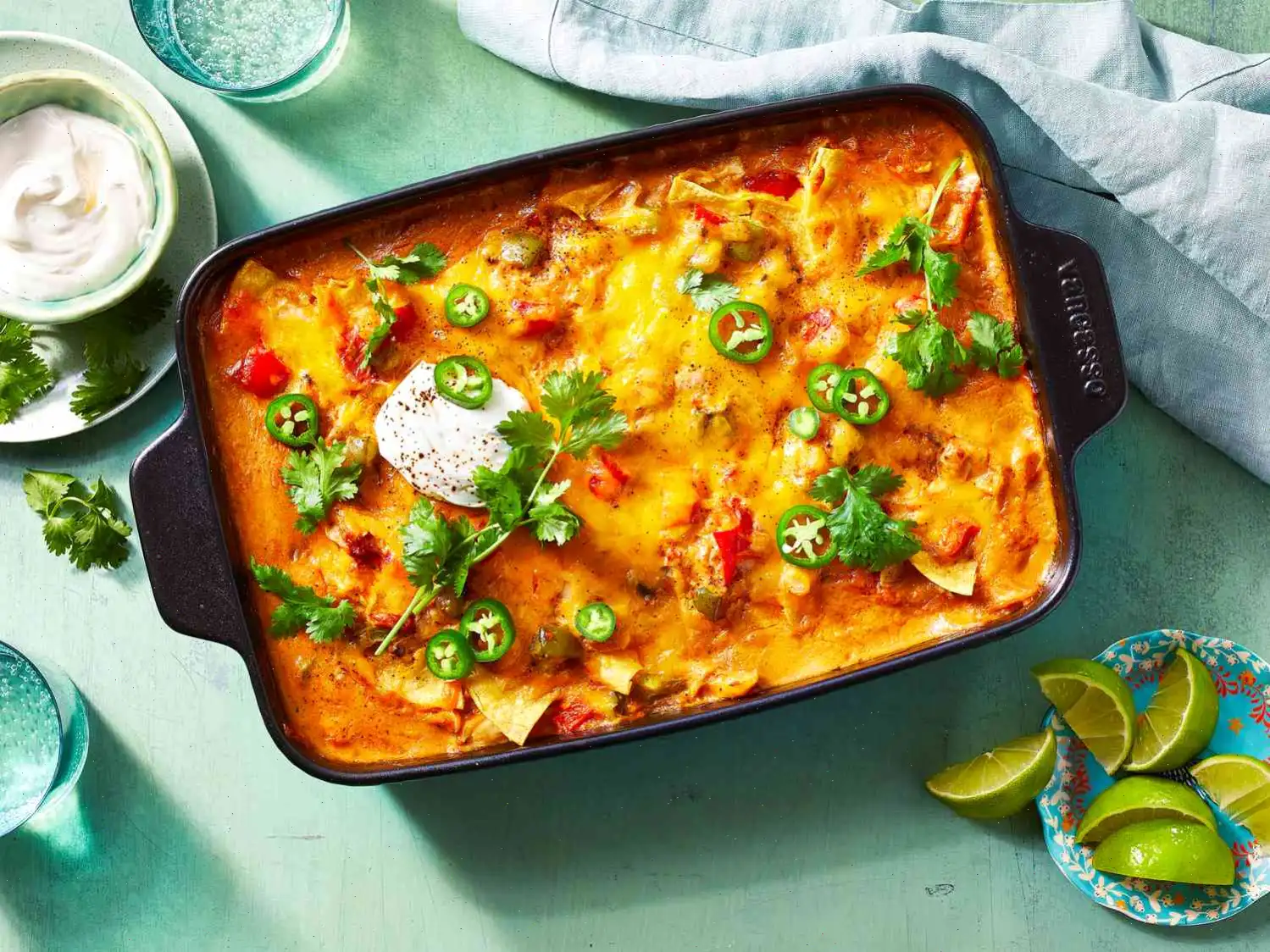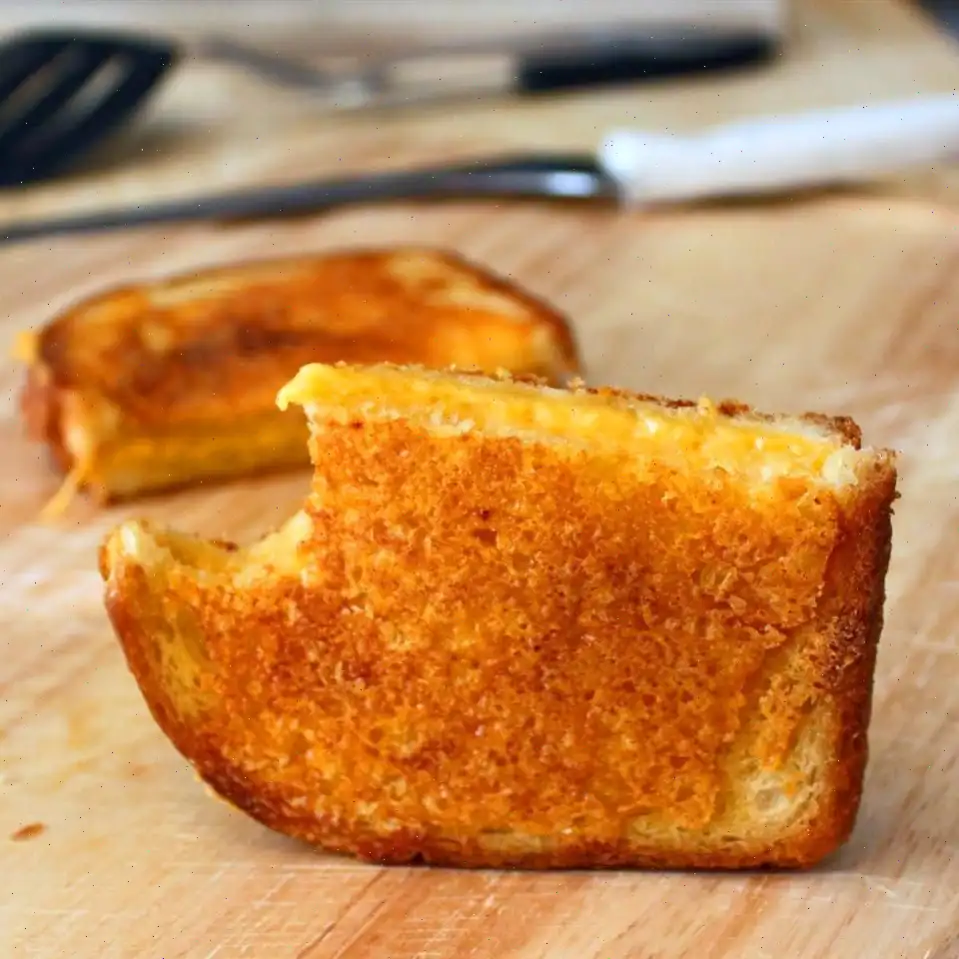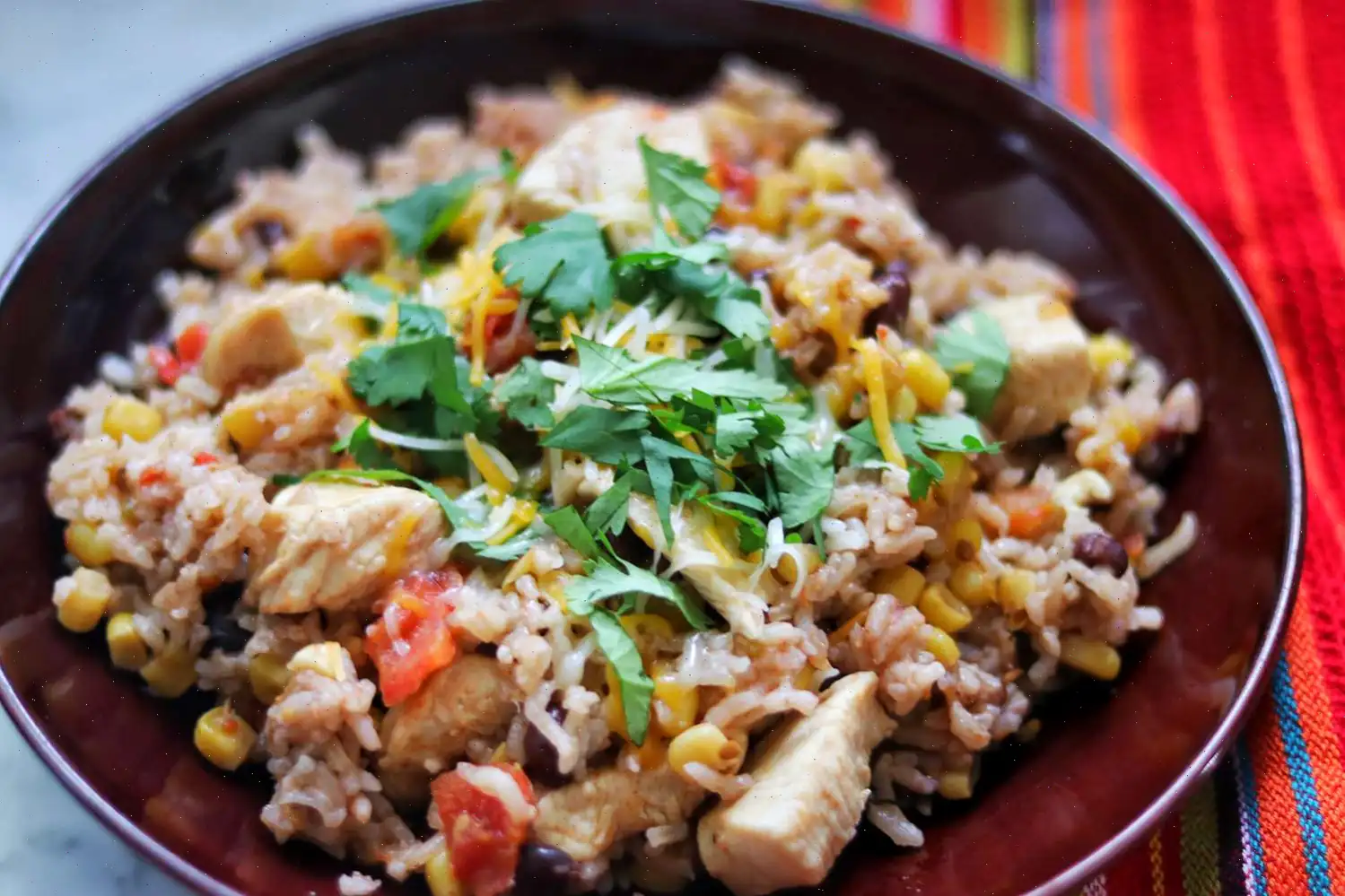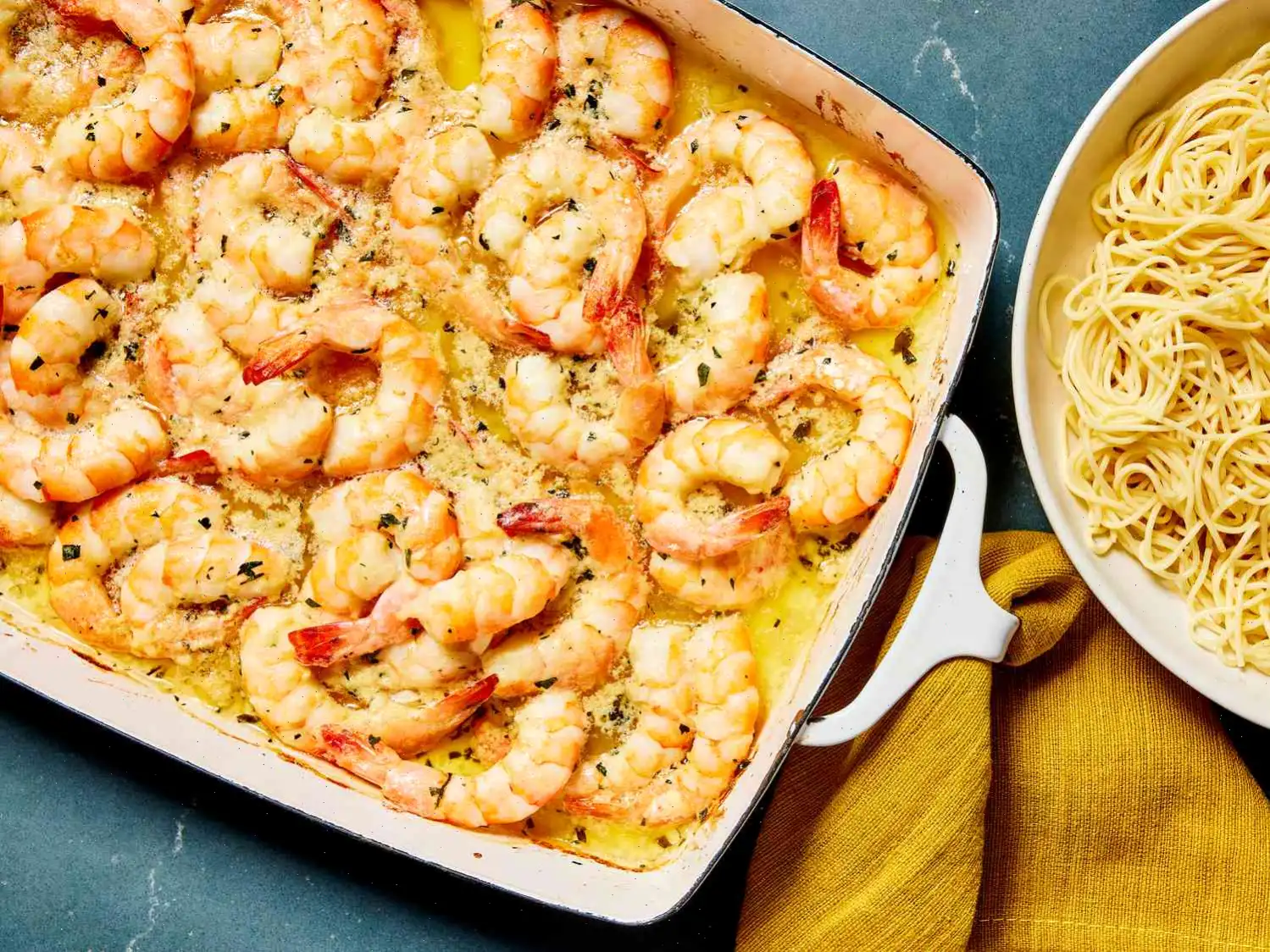
Hot Honey Grilled Carrots Recipe
Ingredients
This recipe was developed for 4 servings. Ingredients scale automatically, but cooking steps and times remain the same. Note that not all recipes scale perfectly.
- 1 pound carrots, peeled, cut into 4-inch lengths, halved or quartered if large
- 1 teaspoon vegetable oil
- 2 tablespoons honey
- 1 tablespoon gochujang or harissa paste
- 1 tablespoon butter, melted
- 1 teaspoon lime juice
- 1/8 teaspoon salt
- 1 pinch crushed red pepper (optional)
- 1 tablespoon chopped fresh cilantro
Directions
- Prepare all ingredients and preheat your outdoor grill to medium-high heat (approximately 425F / 220C).
- Brush the carrots with vegetable oil. Place them on the grill over direct heat, cover, and cook until they are fork-tender and lightly charred, about 14-16 minutes.
- While the carrots are grilling, whisk together honey, gochujang (or harissa), melted butter, lime juice, salt, and crushed red pepper (if using) in a small bowl.
- Once the carrots are cooked, brush them generously with the honey mixture and grill for an additional 1 minute to caramelize the glaze.
- Transfer the glazed carrots to a serving platter. Drizzle any remaining honey mixture on top.
- Garnish with chopped fresh cilantro and serve immediately.
Nutrition Facts (per serving)
- Calories: 122
- Fat: 4g (Saturated: 2g)
- Cholesterol: 8mg
- Sodium: 376mg
- Carbohydrates: 22g (Dietary Fiber: 3g, Sugars: 15g)
- Protein: 1g
- Vitamin C: 5mg
- Calcium: 37mg
- Iron: 0mg
- Potassium: 280mg
* Percent Daily Values are based on a 2,000 calorie diet. Individual daily values may vary depending on calorie needs.
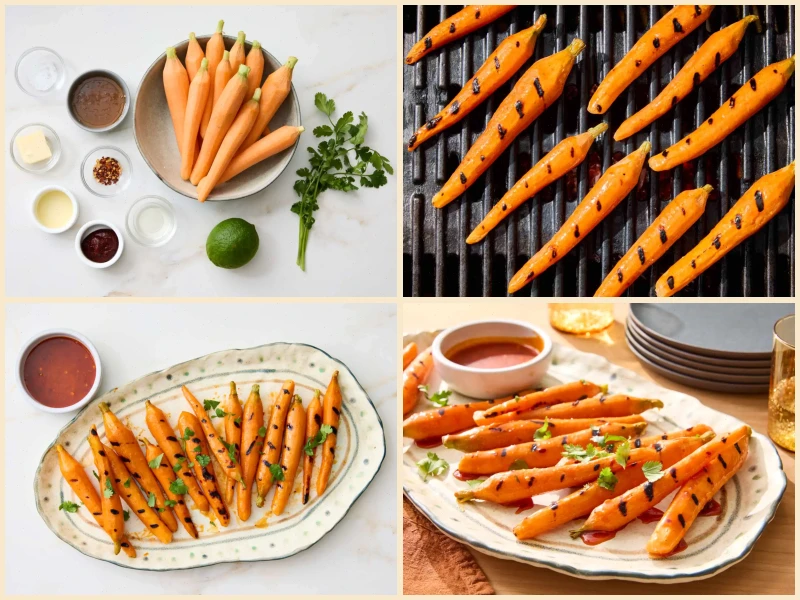
The Story Behind Hot Honey Grilled Carrots
Hot Honey Grilled Carrots is a contemporary twist on the classic roasted vegetable dish, combining the natural sweetness of carrots with the bold punch of chili-infused honey. While carrots have been a staple in diets around the world for centuries, the idea of glazing them with a spicy-sweet sauce originates from modern American fusion cuisine. This recipe gained popularity in the early 2010s when chefs started experimenting with hot honeya blend of honey and chili peppersto elevate simple vegetables into gourmet side dishes. It reflects a broader culinary trend of balancing sweetness with heat, creating layers of flavor that delight the palate.
Regional Variations
Although the recipe is firmly rooted in American cuisine, different regions have added unique touches. In the southern United States, cayenne or hot paprika is sometimes used instead of gochujang or harissa for a smoky spiciness. Coastal areas often incorporate lime or lemon juice to brighten the dish, while urban restaurants may finish the carrots with microgreens or toasted nuts for added texture. In fusion restaurants, chefs occasionally swap the traditional carrot with heirloom or rainbow varieties to enhance visual appeal and introduce subtle differences in sweetness.
Distinguishing Features
Hot Honey Grilled Carrots stand out from similar dishes like glazed carrots or honey-roasted carrots due to their combination of heat and caramelized char. Traditional glazed carrots are usually sweet and sometimes buttery, while roasted carrots focus on caramelization alone. The addition of hot honey, whether using gochujang, harissa, or another chili paste, creates a complex flavor profile where sweetness, spice, and acidity interplay. The grilling method also imparts a smoky, slightly crisp edge, setting this dish apart from purely oven-baked or stovetop versions.
Typical Serving Occasions
This dish is commonly served as a side at casual backyard barbecues, holiday dinners, or modern restaurant menus. It pairs exceptionally well with grilled meats, poultry, or seafood, balancing rich proteins with the bright, spicy-sweet flavor of the carrots. Many chefs also serve it as part of a vegetarian or vegan platter, often accompanied by grains, legumes, or other grilled vegetables. Its vibrant color and bold taste make it a visually appealing and flavorful addition to festive meals.
Interesting Facts
- Carrots, originally purple or white, were selectively bred in the Netherlands in the 17th century to create the familiar orange variety we use today.
- Hot honey has become a culinary trend in the last decade, inspiring everything from pizza toppings to cocktails.
- The combination of heat and sweetness is not only pleasing to the taste buds but also stimulates appetite and digestion.
- Using fresh lime juice enhances the caramelization process and balances the richness of butter and honey, a technique borrowed from Southeast Asian cooking.
- Sprinkling fresh cilantro or herbs at the end adds not just flavor but also a bright, aromatic contrast to the smoky, spicy-sweet glaze.



